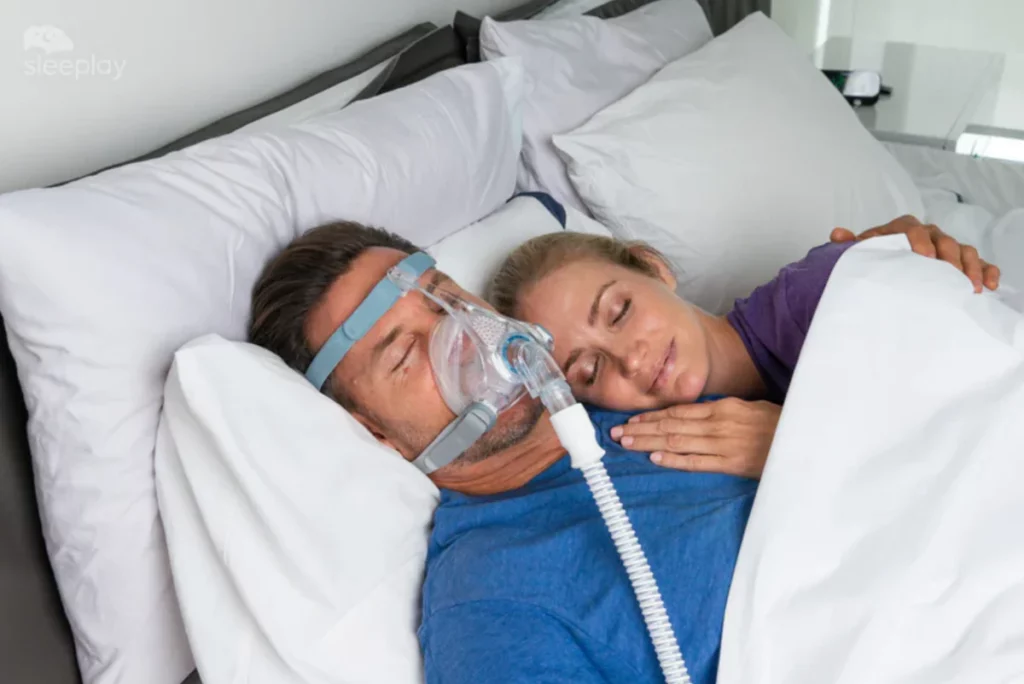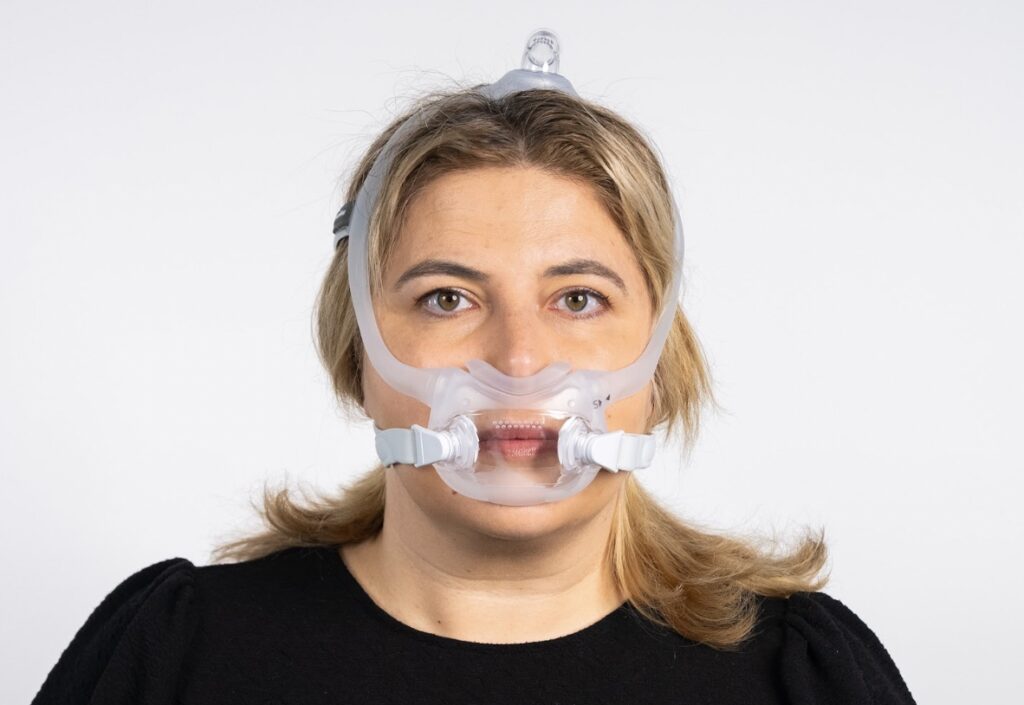CPAP (Continuous Positive Airway Pressure) machines are a crucial tool for individuals with sleep apnea, a condition that disrupts sleep by causing frequent breathing pauses during the night. CPAP machines provide a steady flow of air through a mask to keep the airway open, preventing these interruptions and allowing for better sleep. While CPAP therapy can greatly improve sleep quality, it’s essential to make the right adjustments to ensure maximum comfort and effectiveness. In this article, we’ll explore how CPAP machines work, the different types available, and how to adjust your machine for optimal comfort.
What is Sleep Apnea and How CPAP Machines Help
Sleep apnea is a disorder where a person’s breathing stops and starts repeatedly during sleep. The most common type is Obstructive Sleep Apnea (OSA), which occurs when the muscles at the back of the throat relax too much, blocking the airway. Other types include Central Sleep Apnea, where the brain fails to send proper signals to the muscles that control breathing, and Complex Sleep Apnea, a combination of both obstructive and central sleep apnea.
CPAP machines help manage Obstructive Sleep Apnea (OSA) by delivering a continuous flow of air through a mask, which prevents the airway from collapsing. This allows the person to breathe continuously and sleep more soundly, reducing the associated risks like high blood pressure, heart disease, and stroke.
See more: Comparing Popular CPAP Mask Brands for Sleep Apnea
Types of CPAP Machines
There are several types of CPAP machines available, each designed to meet different needs. Here’s a breakdown of the most common ones:
- Standard CPAP (Continuous Positive Airway Pressure):
- How it Works: Provides a continuous stream of air at a fixed pressure to keep the airway open.
- Benefits: Simple to use, effective for many people with obstructive sleep apnea.
- Limitations: Fixed pressure may not suit people whose pressure needs fluctuate during the night.
- Auto-CPAP (Auto Adjusting CPAP):
- How it Works: Automatically adjusts the air pressure based on changes in your breathing patterns throughout the night.
- Benefits: Offers a personalized experience by adjusting the pressure according to your needs, ensuring comfort and effectiveness.
- Limitations: More expensive than standard CPAP machines.
- BiPAP (Bilevel Positive Airway Pressure):
- How it Works: Provides two levels of pressure—higher pressure for inhalation and lower pressure for exhalation.
- Benefits: Ideal for people with complex sleep apnea or those who find it hard to exhale against continuous pressure.
- Limitations: Typically more expensive and requires more sophisticated settings than standard CPAP machines.
How to Choose the Right CPAP Machine
Selecting the right CPAP machine is essential for comfort and effective treatment. Here are some key factors to consider:
- Comfort: Look for machines that offer features like adjustable pressure, ramp functions (which gradually increase pressure as you fall asleep), and humidifiers that help reduce dryness.
- Noise Level: For those who are sensitive to sound or share a bed, it’s important to choose a quiet machine. Many newer CPAP models are designed to be virtually silent.
- Portability: If you travel often, consider a lightweight and compact machine. Some CPAP devices are specifically designed to be portable and come with carrying cases.
- Price: Standard CPAP machines are usually more affordable, while Auto-CPAP and BiPAP models tend to cost more due to their advanced features.
It’s always a good idea to consult with your healthcare provider to find the best CPAP machine suited to your sleep apnea type and personal preferences.
CPAP Machine Setup and Usage
Once you’ve chosen your CPAP machine, it’s time to set it up for optimal use. Follow these simple steps to get started:

- Unbox and Assemble: Connect the CPAP machine to the power supply and attach the tubing to both the machine and the mask. If the machine includes a humidifier, fill the water chamber with distilled water.
- Adjust the Pressure: For standard CPAP machines, your healthcare provider will set the pressure level. Auto-CPAP machines will automatically adjust the pressure based on your breathing patterns.
- Fit the Mask: The mask should fit snugly without being too tight. Try different types of masks (nasal, full-face, nasal pillows) to find the one that’s most comfortable for you.
- Start the Machine: Turn the machine on before bed. Allow it to run throughout the night, ensuring you get the most benefit from the therapy.
Troubleshooting Tips:
- Air Leaks: If air leaks occur, check the mask for a proper fit. Tighten the straps or adjust the mask position for a better seal.
- Dry Mouth: Use a humidifier to prevent dryness. Alternatively, switch to a full-face mask if you tend to breathe through your mouth.
- Noisy Machine: If the machine is making noise, ensure it is placed on a stable surface and check the filter for blockages.
CPAP Machine Accessories and Maintenance
To ensure your CPAP machine continues to work effectively, regular maintenance and the right accessories are key. Here are some essential items:
- Masks: Clean your mask daily with warm, soapy water to remove any bacteria or oil buildup. Replace your mask every 6 to 12 months.
- Tubing: Clean the tubing weekly with mild soap and warm water. Replace the tubing every 6 to 12 months to prevent mold and bacteria.
- Filters: Change the air filter every month to keep the airflow clean and efficient.
- Humidifiers: If your CPAP machine includes a humidifier, clean the water chamber weekly to prevent bacteria and mold buildup.
Proper maintenance ensures the longevity of your CPAP machine and enhances its performance.
Benefits of Using a CPAP Machine
Using a CPAP machine offers several significant health benefits, including:
- Improved Sleep Quality: By preventing apnea episodes, CPAP machines help users achieve deeper, more restorative sleep.
- Reduced Risk of Heart Disease: Untreated sleep apnea can contribute to cardiovascular issues. CPAP therapy helps improve oxygen levels, reducing the risk of heart disease, stroke, and high blood pressure.
- Better Daytime Energy: Better sleep leads to increased energy, focus, and productivity during the day.
- Enhanced Cognitive Function: CPAP therapy can improve memory, concentration, and decision-making skills.
- Snoring Reduction: CPAP machines help eliminate snoring, improving sleep quality for both the user and their partner.
Common CPAP Machine Problems and How to Solve Them
While CPAP machines are effective, users may encounter some common issues. Here are solutions to help you overcome them:
- Air Leaks: Ensure the mask is properly sealed and adjust the straps if necessary.
- Dry Mouth: Use a heated humidifier or switch to a full-face mask to prevent dry mouth.
- Discomfort: Try different mask types to find the best fit, and use cushion pads for added comfort.
Cost of CPAP Machines and Insurance Coverage
CPAP machines vary in cost based on the type and features:
- Standard CPAP Machines: Typically range from $200 to $800.
- Auto-CPAP Machines: Cost between $500 and $1,500.
- BiPAP Machines: Can range from $1,000 or more.
Insurance Coverage: Many insurance plans cover CPAP machines when prescribed by a healthcare provider. Be sure to check with your insurance provider to determine coverage and out-of-pocket costs.
Conclusion
Adjusting your CPAP machine for maximum comfort is essential for achieving the full benefits of sleep apnea treatment. By ensuring the right fit, adjusting the pressure settings, and maintaining your machine regularly, you can enjoy better sleep and improved health. CPAP therapy not only enhances the quality of your sleep but also reduces the risks associated with untreated sleep apnea, such as heart disease and stroke. Always consult with your healthcare provider to determine the best CPAP machine for your needs, and follow the setup and maintenance guidelines for optimal performance.

